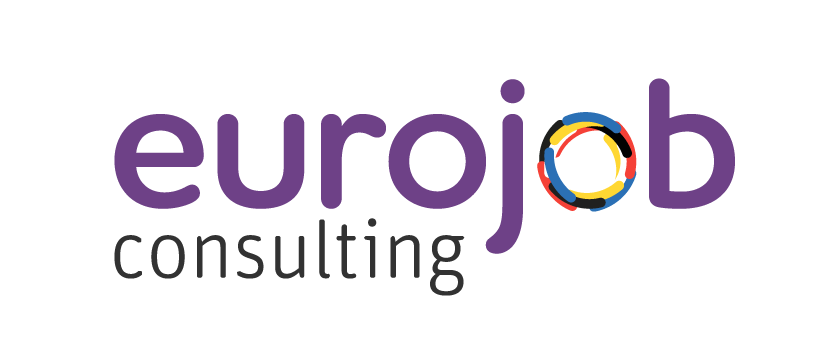Hiring on a budget in France: Effective ways to reduce recruitment expenses

From advertising expenses and recruitment agency fees to onboarding and training costs, the financial impact of hiring in France can quickly add up. Moreover, the hidden costs of a lengthy time-to-fill and high employee turnover can further strain your budget. The good news is that by implementing strategic measures, companies can reduce their hiring costs by up to 45 % without compromising on the quality of their hires. We explore practical methods to streamline your hiring process, leverage technology, and tap into alternative talent pools to achieve substantial savings while still attracting and retaining top talent.
2. Strategies to reduce hiring costs
3. Case study: A French company's success story

Before diving into cost-saving strategies, it's essential to understand the components that contribute to the total cost of hiring. These costs go beyond just the salary of the new employee and can be categorized into several key areas:
Advertising and job postings: This includes expenses related to posting job ads on various platforms, both general and niche. For instance, posting a single job on a premium platform like LinkedIn can cost between €150 to €300 per post. According to Glassdoor, companies spend an average of €4,000 annually on job advertising.
Recruitment agency fees: When companies use external recruiters or headhunters, they typically pay a fee that ranges from 18 % to 25 % of the new hire's first-year salary. For a position with a salary of €50,000, this can mean a cost of €7,500 to €12,500.
Internal recruitment team salaries: The salaries of HR professionals and recruiters who are part of the internal team also add to the cost. On average, the annual salary of an HR recruiter in France is around €35,000, according to Payscale.
"When companies use external recruiters or headhunters, they typically pay a fee that ranges from 18% to 25% of the new hire's first-year salary."
Lea Orellana-Negrin
Recruiter
Eurojob-Consulting

Onboarding and training: Effective onboarding and training are critical for integrating new hires. This can include the cost of training materials, time spent by trainers, and any formal onboarding programs. According to the Society for Human Resource Management (SHRM), the average cost of onboarding a new employee is approximately €3,000.
Time-to-fill: The longer a position remains vacant, the greater the productivity loss. On average, it takes about 42 days to fill a position in France, which can result in significant lost productivity. As estimated by Workable, the cost of a vacant position can be as much as €500 per day, depending on the role.
Employee turnover costs: High employee turnover rates further compound hiring costs. This includes not only the cost to hire a replacement but also the potential loss of productivity and institutional knowledge. Gallup estimates that replacing an employee can cost between one-half to two times the employee's annual salary.
Understanding these costs is crucial for businesses aiming to reduce their hiring expenses. By identifying the specific areas where costs are highest, companies can implement targeted strategies to achieve significant savings. For instance, reducing the time-to-fill can save thousands of euros in lost productivity, while leveraging employee referrals can cut down on advertising and recruitment agency fees.
Reducing hiring costs while continuing to attract top talent is a challenge many companies face. Fortunately, there are several proven strategies that can significantly decrease these costs. Here are some of the most effective methods:
Optimize job advertising
One straightforward way to cut hiring costs is to optimize your job advertising strategy. Instead of posting on every possible job board, focus on platforms that have proven effective for your industry. Utilize social media channels like LinkedIn, Twitter, and Facebook, which can often be more cost-effective and provide access to passive candidates.
Example: A study by Recruitment.com found that companies using targeted job boards reduced their advertising costs by 25 % on average compared to those using general job boards.
Leverage employee referrals
Employee referral programs are a cost-effective way to find quality candidates. Your existing employees can help identify potential candidates within their networks, often leading to faster hires and better cultural fits. Incentivizing referrals can further enhance the program's effectiveness.
Example: According to ReferralRock, companies can reduce hiring costs by up to 40 % by implementing robust employee referral programs. Referred candidates also tend to have a 15 % longer tenure than those sourced through other methods.
Use technology to streamline the process
Investing in recruitment technology can yield substantial savings in the long run. Applicant Tracking Systems (ATS), AI-driven recruitment tools, and automated interview scheduling can significantly reduce the time and effort required in the hiring process.
Example: A report by PwC indicated that companies using advanced recruitment technologies saw a 30 % reduction in time-to-fill and a 20 % decrease in overall hiring costs.
Tap into freelance and contract talent
For short-term projects or roles that require specialized skills, consider hiring freelancers or contractors. This approach can be more cost-effective than hiring full-time employees, especially for project-based work.
Example: Upwork found that businesses could save up to 50 % on labor costs by utilizing freelance talent for specific projects instead of hiring permanent staff.
Outsource recruitment process outsourcing (RPO)
Engaging a recruitment process outsourcing (RPO) provider can help streamline your recruitment efforts. RPO providers can handle various aspects of the hiring process, from sourcing candidates to conducting interviews, often at a lower cost than maintaining a full-fledged internal recruitment team.
Example: According to a study by Everest Group, companies using RPO services can reduce their recruitment costs by 30 % to 45 %.
Implement a robust onboarding program
Effective onboarding can reduce turnover and improve employee retention, thereby lowering the costs associated with hiring and training new employees. A comprehensive onboarding program helps new hires integrate smoothly into the company culture and become productive faster.
Example: The Society for Human Resource Management (SHRM) reports that organizations with structured onboarding programs enjoy a 50 % increase in new hire productivity and a 20 % increase in retention rates.
By implementing these strategies, companies can not only reduce their hiring costs but also enhance the overall efficiency and effectiveness of the hiring process.

Understanding and implementing strategies to reduce hiring costs is one thing, but seeing how they work in practice is even more valuable. Here is a concrete example of a French company that successfully reduced its recruitment costs significantly while maintaining high-quality hires.
Company background
- Company: TechInnovate Solutions
- Industry: Technology
- Challenge: High recruitment costs and prolonged time-to-fill for technical roles
TechInnovate Solutions, a growing French tech company, was facing high recruitment costs and particularly long time-to-fill for technical positions. The company needed to hire software developers, system engineers, and other critical technical talent. Traditional recruitment methods were proving to be both costly and inefficient.
Implementation of cost-reduction Strategies
To address these challenges, TechInnovate implemented several strategies mentioned previously:
Targeted job advertising: TechInnovate focused its job advertising efforts on specialized tech job boards and utilized LinkedIn to target passive candidates. By reducing reliance on general job boards, the company was able to cut down its advertising costs.
Employee referral program: A new employee referral program was launched, offering bonuses to employees who recommended qualified candidates. This program helped recruit faster and at a lower cost.
Recruitment technology: The company invested in an Applicant Tracking System (ATS) and AI-driven recruitment tools to automate candidate screening and interview scheduling, significantly reducing the administrative burden.
Freelance talent: For short-term projects, TechInnovate tapped into freelance talent through platforms like Upwork, saving on the costs of hiring full-time staff for temporary needs.
Recruitment Process Outsourcing (RPO): By engaging a Recruitment Process Outsourcing (RPO) provider, TechInnovate outsourced various aspects of its recruitment process, achieving cost savings over maintaining an internal recruitment team.
Structured onboarding program: TechInnovate also implemented a comprehensive onboarding program, which helped new hires integrate quickly and reach full productivity sooner.
Results
The results of these initiatives were impressive:
Reduction in recruitment costs: TechInnovate managed to reduce its recruitment costs by 42 % within a year.
Decrease in time-to-fill: The average time-to-fill was cut by 30 days, from 60 to 30 days on average.
Improvement in employee retention: Employee retention rates increased by 15 % due to better cultural fit and effective onboarding.
TechInnovate Solutions' experience demonstrates that strategically implementing cost-reduction measures can lead to substantial savings while attracting and retaining top talent.

Jérôme Lecot




